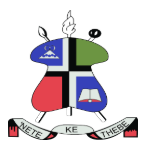Detailed introduction of the National University of Lesotho:
Basic introduction
The National University of Lesotho is the main and oldest university in Lesotho, located in the Roma area 34 kilometers southeast of Maseru, the capital of Lesotho.
School Overview
Founded: 1945.
Student size: about 10,000.
Campus area: 198 acres (80 hectares).
School colors: red and white.
School nickname: Rovers.
History
On April 8, 1945, the Roman Catholic Church of South Africa established the Catholic University College in Rome.
On January 1, 1964, the Catholic University College was replaced by the independent, non-denominational University of Basutoland, Bechuanaland Protectorate and Swaziland.
In 1966, with the country's independence, the school was renamed the University of Botswana, Lesotho and Swaziland.
On October 20, 1975, the National Assembly of Lesotho passed a bill to establish the National University of Lesotho on the Lesotho (Rome) campus of the former University of Botswana, Lesotho and Swaziland.
School Strength
Faculty: There are 501-1000 faculty and staff.
Academic Achievements: The school conducts research in many fields, and its institutional knowledge base provides a display platform for the research results of teachers and students, and has signed the Budapest Open Access Initiative to promote open access.
International Cooperation: It is a member of the Association of Commonwealth Universities, the Association of African Universities, the International Association of Universities, the Association of Southern African Universities, and the Association of Eastern and Southern African Universities, and actively carries out international exchanges and cooperation.
Nature of the institution: Public university
Educational philosophy
Committed to cultivating thought leaders, cultivating capable and responsible professionals for Lesotho and the world through high-quality teaching, research and social services, and promoting the development of the country and region.
Key disciplines and departments
Departments: There are agricultural departments, education departments, health science departments, humanities departments, law departments, science and technology departments, social science departments and off-campus learning institutes.
Key disciplines: There are no clear and particularly prominent key disciplines, but agriculture, medicine, law and other disciplines have a certain influence and importance in the local area and are the key areas of development of the school.
Rankings
Ranked 6,045th in the world and 121st in Africa.
Expenses
There is no public tuition information, but as a public university, there are generally relatively reasonable charging standards, which may vary according to different majors and courses.
Campus environment
The campus is located in the Roman Valley, surrounded by mountains, with beautiful scenery, mild climate and distinct four seasons. The campus has modern teaching facilities, libraries, laboratories, etc., providing students with a good learning and research environment. The school also has student dormitories, restaurants, sports facilities and other living facilities to meet the daily needs of students.
-

Lerotholi Polytechnic
-

National University of Lesotho
-

Mesoamerican University
-

Istmo University
-

Mariano Galvez University of Guatemala
-

Regional University of Guatemala
-

Galileo University
-

Francisco Marroquín University
-

Rafael Landívar University
-

University of the Valley of Guatemala
-

University of San Carlos of Guatemala
-

Technological Institute of Tlaxcala Plateau
-

Golfo University
-

Technological University of South Sonora
-

Technological University of Huejotzingo
-

Tizimín Institute of Technology
-

Chilpancingo Institute of Technology
